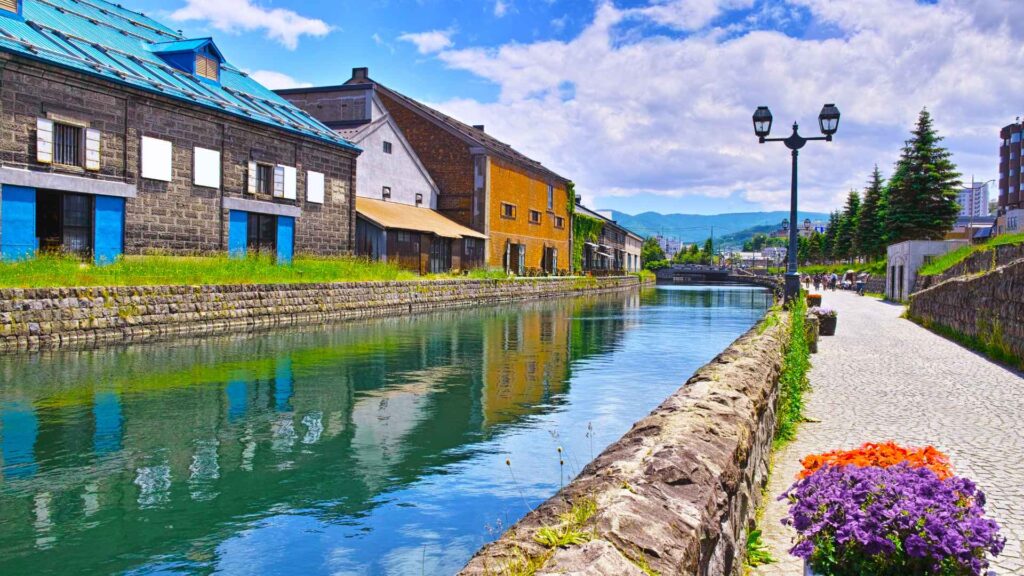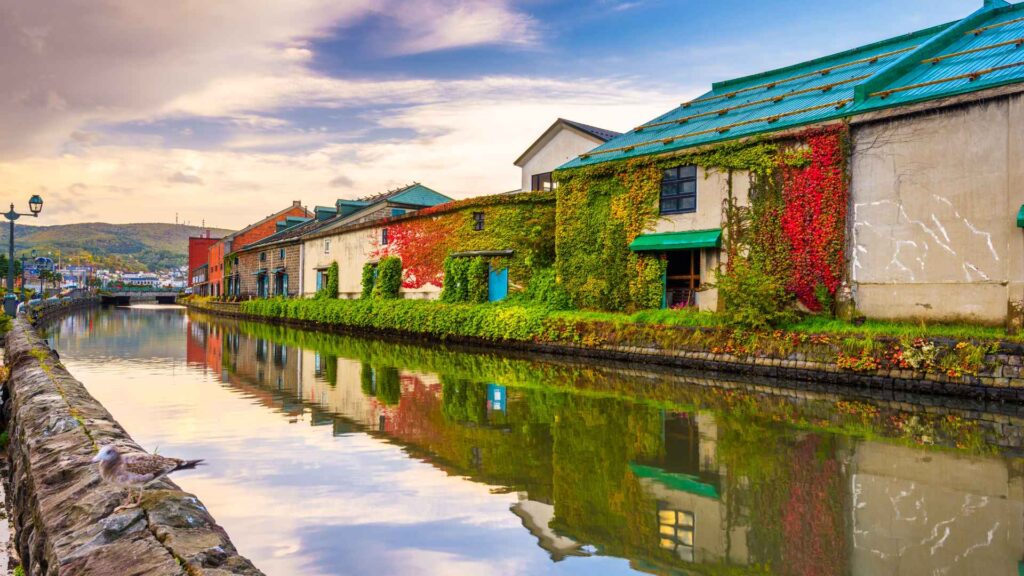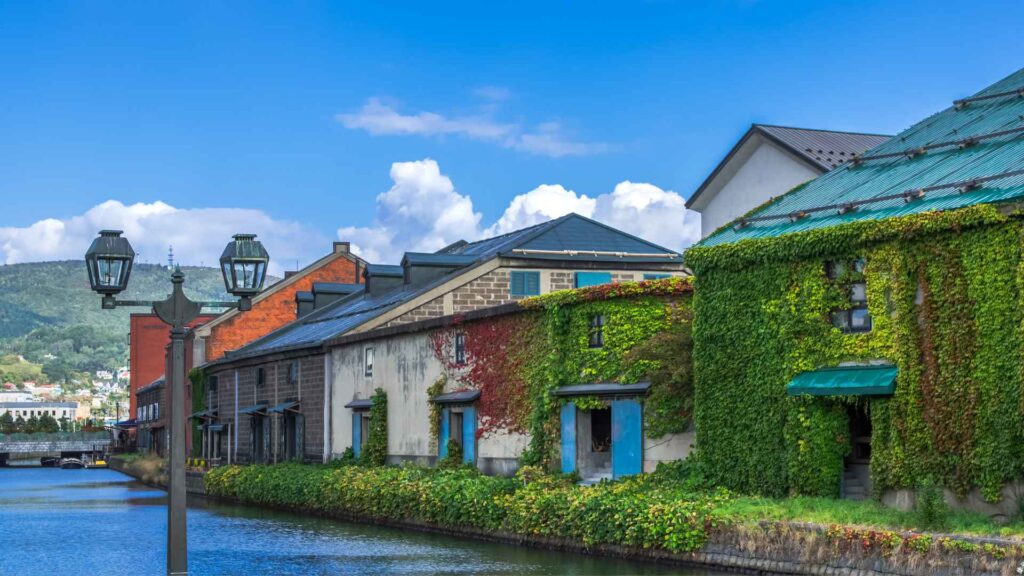Situated on the northwest coast of Hokkaido, Otaru Cruise Port offers a charming blend of tradition, scenic beauty, and modern comforts.
This guide will lead you through top attractions, regional delights, and essential tips for an unforgettable journey.
Discover why Otaru is a favorite gateway for travelers seeking authentic Japanese experiences.
Otaru Cruise Port: Quick Overview
Tucked along Hokkaido’s western shoreline, Otaru Cruise Port welcomes travelers from across the globe.
This historical port stands out for its nostalgic ambience and easy access to Otaru’s famed canal district.
Whether you arrive on a large cruise ship or a smaller vessel, you’ll find the port well-equipped with comfortable waiting areas, tourist information counters, and convenient transportation links.

Key highlights of Otaru Cruise Port include:
- Strategic Location: Only half an hour from Sapporo by train, making day trips a breeze.
- Visitor Amenities: Well-labeled signs, currency exchange services, and English-speaking staff.
- Harbor Views: Picturesque harbor scenery that’s ideal for photography.
Port Facilities and Arrivals
- Many cruise lines favor Otaru as a gateway to Hokkaido thanks to its proximity to Sapporo and New Chitose Airport.
- The port terminal features souvenir shops, cafés, and seating areas where you can relax before or after excursions.
- Easy luggage services make it convenient to store bags if you plan to explore the city on foot.
Because Otaru is smaller than some major Japanese ports, it retains a quiet, laid-back charm. You’ll quickly understand why locals boast about their city’s seafood, architecture, and warm hospitality.
From the moment you disembark, the port’s staff and volunteers are on hand to help you navigate, ensuring every traveler feels at ease. If you plan to explore Otaru’s hidden gems, kick off your adventure here at the port’s helpful information desk.
Transportation and Getting Around
Navigating your way through Otaru is simple and efficient, thanks to its developed public transportation system and pedestrian-friendly layout.
Travelers often remark that the city’s charm is best appreciated on foot, but if you need other options, there are plenty of choices.
Getting from the Port to the City Center
- Cruise Terminal Shuttle: Some ships provide free or low-cost shuttle buses. Check with your cruise line for schedules.
- Local Bus: Public buses connect the port terminal with the city’s main attractions, including Otaru Canal, Sakaimachi Street, and Otaru Station.
- Taxi Services: Taxis are readily available near the port, offering fast and direct routes if you’re short on time.
Train Connections
- Otaru Station is a major hub, linking the city to Sapporo and beyond via the JR Hokkaido network.
- Purchase a prepaid transportation card (like Kitaca) for easy hopping on and off trains and buses.
- The scenic train ride from Otaru to Sapporo offers stunning coastal views, making it a journey in itself.
Walking and Biking
- The city’s canal area and historic district are very walkable. Sidewalks and crossing signals are well-maintained.
- Bike rentals are an appealing option in warmer months. You’ll find rental shops close to Otaru Station or near popular tourist spots.
Insider Tips
- Learn a few Japanese phrases or have a translation app on hand if you need directions.
- Plan ahead during rush hours or peak travel seasons to avoid long lines.
- Consider a day pass for local buses if you’re planning multiple stops, as it can be cost-effective.
With its combination of convenience and compact city design, Otaru encourages travelers to go at their own pace. Whether you prefer strolling along the cobblestone paths or taking advantage of reliable public transport, you’ll find transportation solutions to fit your style and schedule.

History and Culture
Otaru’s identity as a port city has shaped its rich history and diverse cultural landscape. In the late 19th and early 20th centuries, the city flourished as a commercial hub for herring fisheries and trade.
Its golden age is reflected in the elegant Western-style buildings and traditional Japanese architecture you’ll see throughout the port area.
Historical Highlights
- Herring Mansions (Nishin Goten): These grand estates were once owned by wealthy fishing magnates. Today, they offer insight into the lavish lifestyles and architectural styles of the era.
- Otaru Canal: Once a bustling trade artery, it’s now a romantic promenade lined with restored warehouses and stone pathways.
Cultural Influences
- International Trade Roots: Otaru’s position as a trading port brought Western influences that merged with Japanese tradition, giving the city its distinct character.
- Art and Crafts: Glassblowing, music boxes, and sake brewing are among the local artistic and artisanal expressions. Studios and museums across the city showcase these crafts.
Local Traditions
- Seasonal Festivals: The Otaru Snow Light Path Festival each February illuminates the streets and canal with lanterns and snow sculptures. In summer, lively events celebrate the city’s maritime heritage.
- Culinary Heritage: Fishing has always been at the heart of Otaru’s community, which is why fresh seafood remains a defining feature of its cultural identity.
Connecting with the Past
- Tour the Otaru Museum to delve deeper into local history, from the indigenous Ainu heritage to the modern era.
- Join a cultural walking tour to learn how Otaru’s unique location influenced its growth and social fabric.
- Respect local customs, such as removing your shoes at temples or ryokans, to foster a genuine cultural exchange.
Otaru’s proud maritime past and cultural tapestry invite exploration. By wandering its historic streets and visiting museums and historical sites, you’ll gain an appreciation for how the city’s port influenced both the region and the broader island of Hokkaido.
Top Attractions Near Otaru Cruise Port
Otaru is replete with picturesque sites just minutes from its cruise port.
Whether you’re drawn to cultural landmarks, scenic walks, or family-friendly activities, the city is sure to captivate your senses. Here’s a snapshot of must-see places that belong on every traveler’s itinerary.
- Iconic symbol of the city’s past industrial might.
- Lined with brick warehouses that have been converted into museums, restaurants, and shops.
- Evening canal lights create a romantic setting perfect for strolling or capturing photographs.
Sakaimachi Street
- Known for its restored merchant houses and nostalgic atmosphere.
- Bursting with artisan shops, glass studios, music box stores, and sweet shops selling local confections.
- Great spot to pick up handcrafted souvenirs or watch glassblowing demonstrations.
Otaru Music Box Museum
- Housed in a historical building, featuring hundreds of charming music boxes from around the globe.
- Interactive sections let you create a personalized music box as a keepsake.
- The museum’s whimsical décor appeals to visitors of all ages.
Mount Tengu
- Accessible by ropeway, offering panoramic views of Otaru’s cityscape, harbor, and the Sea of Japan.
- Ideal for hiking in spring and summer or skiing and snowboarding in winter.
- A small ski museum near the summit gives insight into the sport’s local history.
Glass-Blowing Studios
- Otaru is famous for its glass artisans, a tradition traced back to the city’s maritime roots.
- Visitors can observe master glassblowers at work and even try their hand at glassmaking.
- Colorful glass souvenirs range from tableware to decorative ornaments.
LeTAO and Other Dessert Shops
- Local dessert brand LeTAO is renowned for its creamy cheesecakes and confectionaries.
- Sample light chiffon cakes, chocolates, and soft serve ice cream infused with Hokkaido’s rich dairy.
When you step off your cruise ship, these attractions are all within easy reach.
Whether you explore on foot or by local bus, be sure to leave time for spontaneous detours—the city’s charming alleyways and hidden cafes often lead to memorable encounters.

Culinary Delights
Otaru’s cuisine stands out for its fresh seafood, inventive sweets, and locally brewed beverages.
Whether you crave sushi, crab, or indulgent desserts, you’ll find plentiful options close to the cruise port and around the city center.
Fresh Seafood and Sushi
- Otaru’s prime coastal location means ultra-fresh catches like crab, sea urchin, salmon, and scallops.
- Traditional sushi shops line the Sushi Street (Sushiya-dori) near the canal, each with its own specialty.
- Try kaisendon (seafood rice bowls) loaded with an assortment of sashimi for a hearty meal.
Local Specialties
- Uni (Sea Urchin): Revered for its rich, creamy texture. Enjoy it as sushi or in a steaming hot pot.
- Ishikari Nabe: A salmon-based hot pot, often cooked with miso, vegetables, and tofu for a comforting meal.
- Herring: Historically integral to Otaru’s fishing industry, herring continues to grace local menus.
Sweets and Desserts
- Besides LeTAO’s famed cheesecakes, you’ll discover kitakaro, a beloved shop for pastries and soft cream.
- The city’s European-inspired dessert shops reflect the blend of Western and Japanese influences.
Sake and Beer
- Otaru’s sake breweries use meltwater from Hokkaido’s mountains, creating a smooth, refreshing flavor.
- Visit local breweries for tastings and short tours.
- Beer lovers should try Otaru Beer, a German-style brew crafted with authentic methods.
Dining Tips
- Reservations are recommended at popular sushi restaurants, especially during peak cruise season.
- Many places offer English menus, but pointing or showing pictures works just as well.
- Try a local izakaya for an immersive dining experience, complete with grilled seafood, yakitori, and Japanese pub ambiance.
From fresh seafood to decadent desserts, Otaru’s culinary scene exemplifies Hokkaido’s reputation for quality ingredients. Every bite tells a story of the city’s maritime past and cultural influences—so come hungry and explore the flavors that make Otaru unforgettable.
Shopping and Souvenirs
Otaru’s retail scene blends traditional handicrafts, gourmet treats, and stylish boutiques. Whether you’re a casual shopper or a dedicated bargain hunter, you’ll find the perfect memento or gift within walking distance of the cruise port.
Handcrafted Glass and Crystal
- Otaru is famed for its glassmaking tradition that dates back over a century.
- Ornamental glassware, jewelry, and decorative pieces are sold in the city’s glass shops and studios.
- Visiting a glass workshop lets you create your own piece, offering a tangible memory of your trip.
Music Boxes
- The city’s strong connection to music boxes is evident in the Otaru Music Box Museum and surrounding stores.
- Choose from classic wooden designs or elaborate, whimsical creations adorned with figurines.
- Many shops provide engraving services, perfect for personalizing gifts.
Local Food Products
- Hokkaido’s rich dairy leads to buttery cookies, chocolates, and caramels. Royce’ and Shiroi Koibito are popular brands.
- Seafood-themed snacks, including dried herring and smoked salmon, are well-loved souvenirs.
- Don’t forget to bring home Hokkaido cheese and fresh fruit jams if customs regulations allow.
Fashion and Accessories
- Stroll down Sakaimachi Street and find boutiques offering both Western and Japanese-inspired clothing.
- Traditional yukata or kimono accessories can be found in specialty shops, adding a cultural flair to your wardrobe.
Shopping Etiquette
- Cash is king in many smaller shops, though credit cards are accepted in larger retail outlets.
- Tax-free shopping is available for overseas visitors at some stores; remember to bring your passport.
- Politeness goes a long way—expect friendly greetings and attentive service.
Tips for Bargain Hunters
- Check out periodic sales during summer and winter.
- Visit local markets such as Otaru Triangle Market, where you can find seasonal produce and fresh fish at competitive prices.
Otaru’s emphasis on local craftsmanship and artisanal goods ensures that every purchase carries a piece of the city’s history and charm. From glittering glass ornaments to savory seafood treats, the shopping scene near Otaru Cruise Port is as vibrant as it is diverse.
Seasonal Experiences
Otaru’s distinct four-season climate offers travelers a spectrum of unique events, festivals, and scenic transformations throughout the year. No matter when your cruise docks, you’ll encounter memorable sights and activities tailored to the season.
Spring (March to May)
- Cherry Blossoms: Parks like Temiya Park come alive with soft pink blooms.
- Mild Weather: Comfortable for walking tours around the canal and historical districts.
- Seafood Delights: Fresh catches reflect the transition from winter harvests, with sweet seasonal shrimp and clams.
Summer (June to August)
- Pleasant Temperatures: Ideal for hiking Mount Tengu, biking along coastal roads, or strolling near the port.
- Marine Festivals: Celebrate Otaru’s maritime heritage with boat races, lively music, and food stalls.
- Fireworks Displays: Look skyward during local festivals for vibrant firework spectacles over the harbor.
Autumn (September to November)
- Dazzling Foliage: Autumn leaves blanket mountainsides in shades of red, orange, and gold.
- Harvest Season: Enjoy Hokkaido’s bounty with seasonal seafood and produce, including roasted sweet potatoes and pumpkins.
- Cultural Events: Look out for local craft fairs showcasing glass art, pottery, and textiles.
Winter (December to February)
- Snow Light Path Festival: In February, the city’s streets and canal glow with candles and ice lanterns, creating a dreamy winter atmosphere.
- Snow Sports: Skiing or snowboarding at Mount Tengu or nearby resorts offers pristine powder.
- Cozy Dining: Warm up with hot pot dishes, sake tastings, and steaming bowls of ramen.
Insider Tips for Seasonal Travel
- Dress Appropriately: Winter can be harsh, so bring layers if you’re visiting between December and March.
- Book Early: Accommodations fill up quickly during peak festivals like the Snow Light Path.
- Keep an eye on weather forecasts to plan outdoor activities.
From the delicate flutter of springtime cherry blossoms to the magical glow of winter lanterns, Otaru’s changing seasons ensure a new perspective each time you visit. Plan your itinerary around these seasonal highlights and immerse yourself in the city’s annual festivities.
Cruise Essentials and Practical Tips
When planning a stop at Otaru Cruise Port, a bit of foresight can make your trip smoother and more enjoyable. Below are some essential tips and practical information to help you get the most out of your journey.
Currency and Payments
- The local currency is the Japanese Yen (JPY).
- ATMs at major convenience stores accept international cards, though it’s wise to carry some cash.
- Many shops near Otaru Cruise Port accept credit cards, but smaller eateries and stalls might not.
Travel Documents and Visas
- Ensure your passport is valid throughout your stay.
- Some nationalities require a tourist visa; check Japan’s immigration rules before sailing.
- Having a printed itinerary and hotel or cruise details can speed up immigration procedures.
Language Considerations
- Japanese is the primary language, but English signage is common in tourist areas.
- Hotel and port staff often speak basic English, but a translation app can help with taxi drivers or smaller shops.
Connectivity
- Pocket Wi-Fi or a local SIM card is recommended for reliable internet.
- Look for free Wi-Fi at some cafés, tourist centers, and inside the cruise terminal.
Emergency Contacts
- Japan’s emergency number for police is 110, and for ambulance/fire is 119.
- Keep your cruise line’s emergency hotline handy in case of schedule changes or unforeseen delays.
Health and Safety
- Otaru is generally a safe city, but stay alert in crowded tourist zones.
- Bring necessary prescription medications in clearly labeled bottles.
- Public restrooms are widely available, and many have free hygiene supplies, though carrying tissues and hand sanitizer is a good idea.
Time Management
- Check your ship’s schedule: departing on time is crucial, as the cruise line won’t wait for latecomers.
- Plan to return to the port at least an hour before your cruise’s departure to accommodate traffic or long lines.
Eco-Friendly Travel
- Dispose of trash properly; Japan emphasizes cleanliness and recycling.
- Otaru’s pristine environment deserves respect—avoid littering or damaging local flora and fauna.
Whether you’re on a whistle-stop port excursion or an extended stay, following these practical tips will reduce stress and help you focus on enjoying Otaru’s sights, flavors, and experiences. With the right preparation, your time at Otaru Cruise Port will be smooth sailing.


